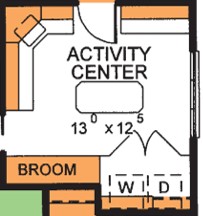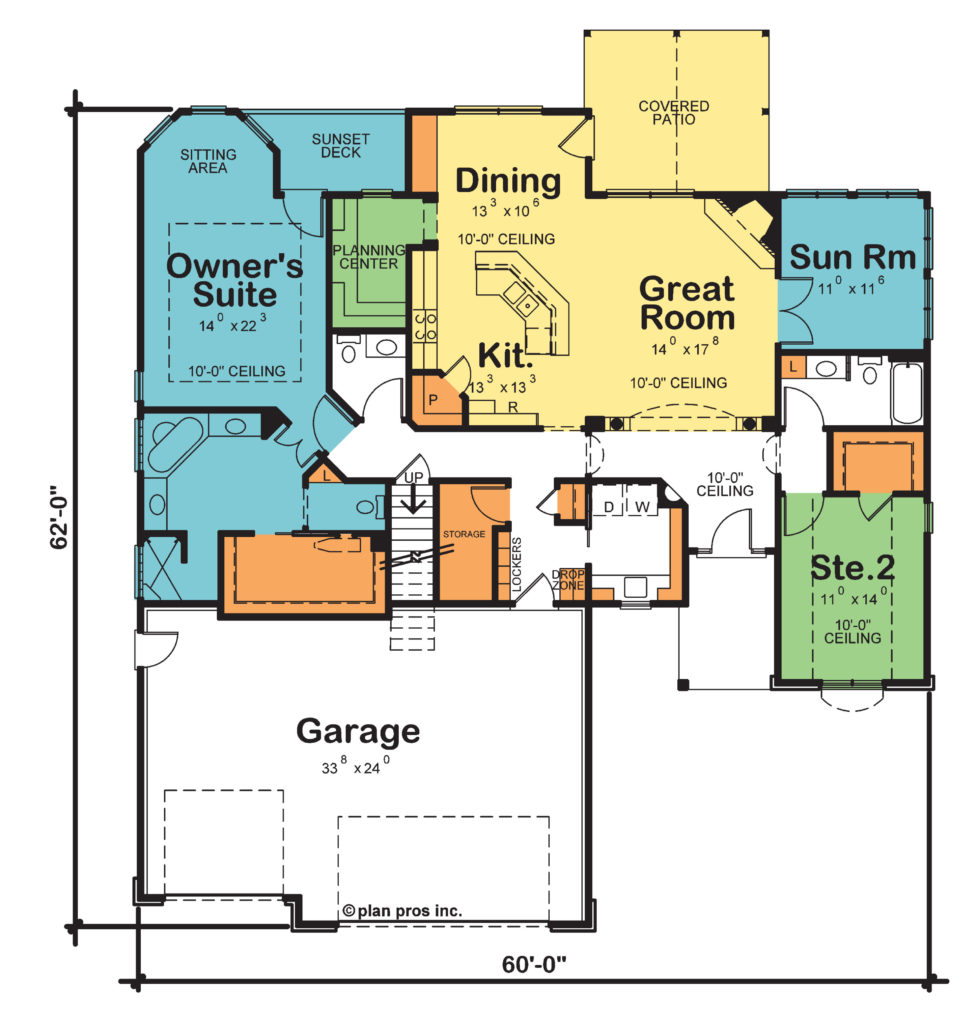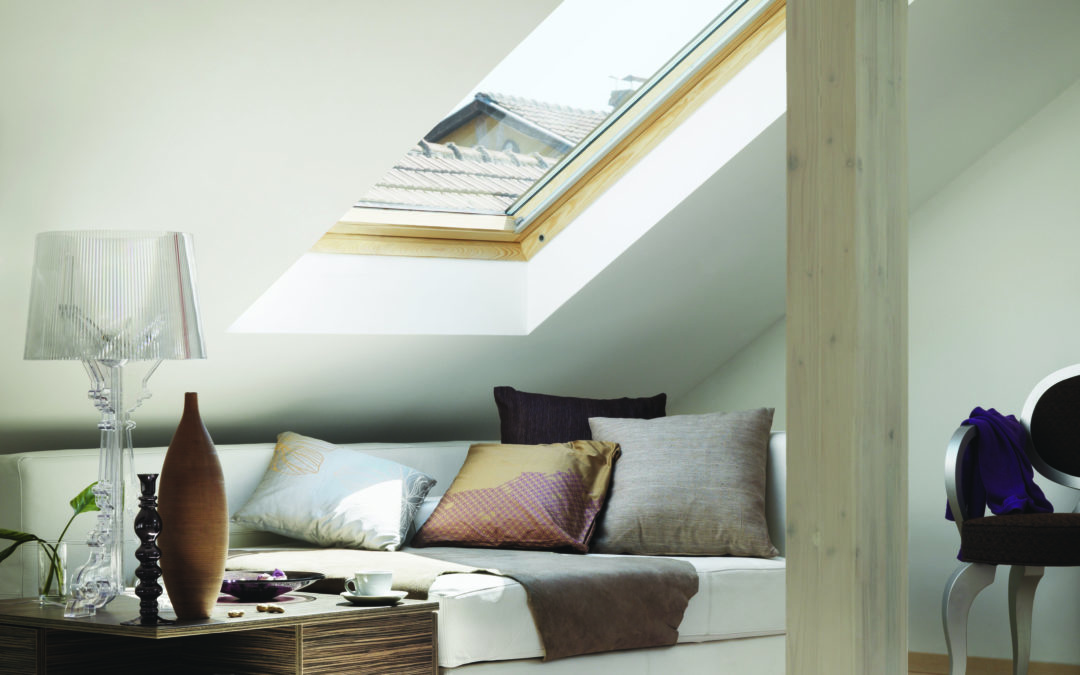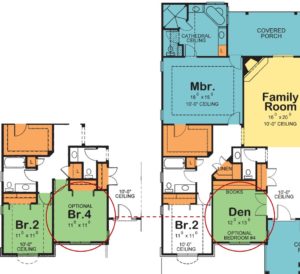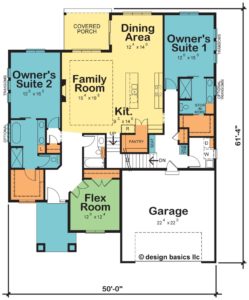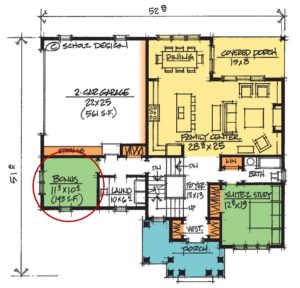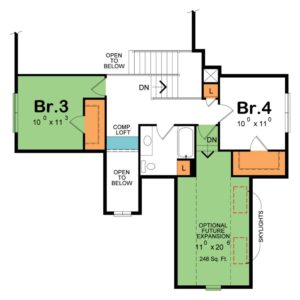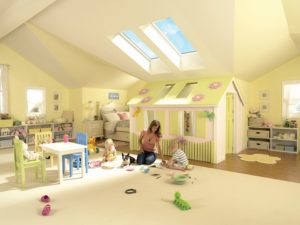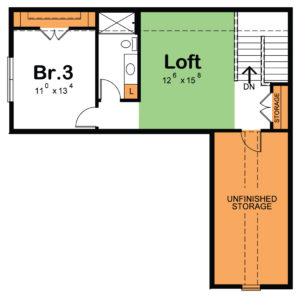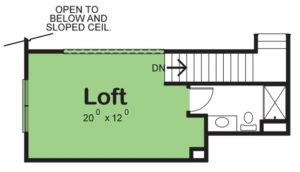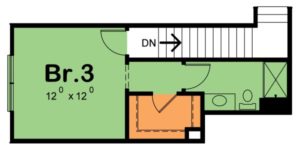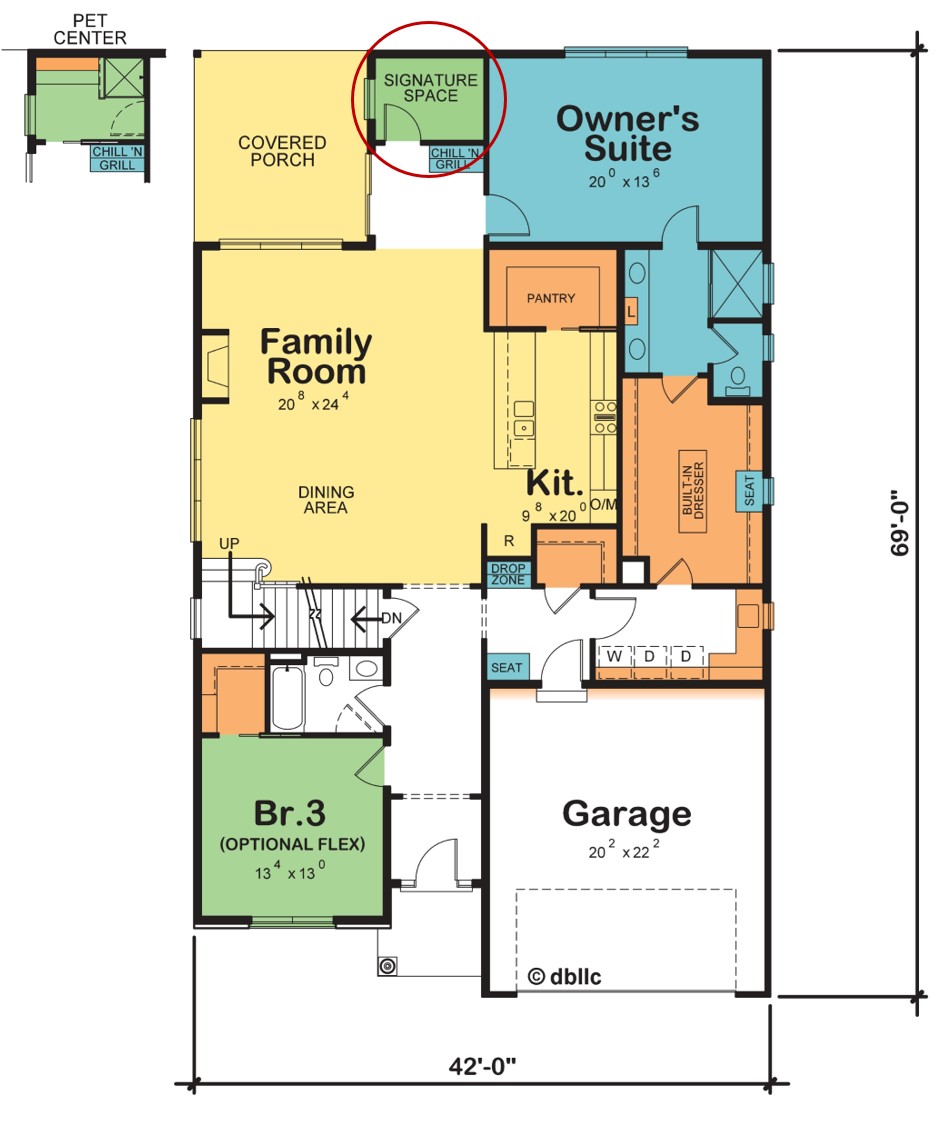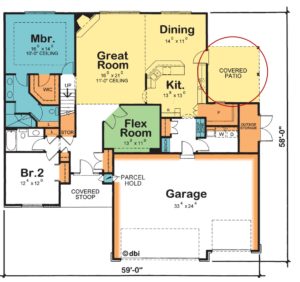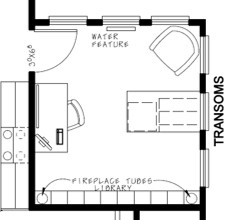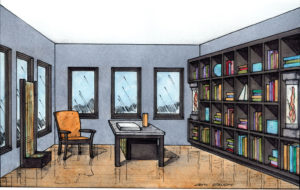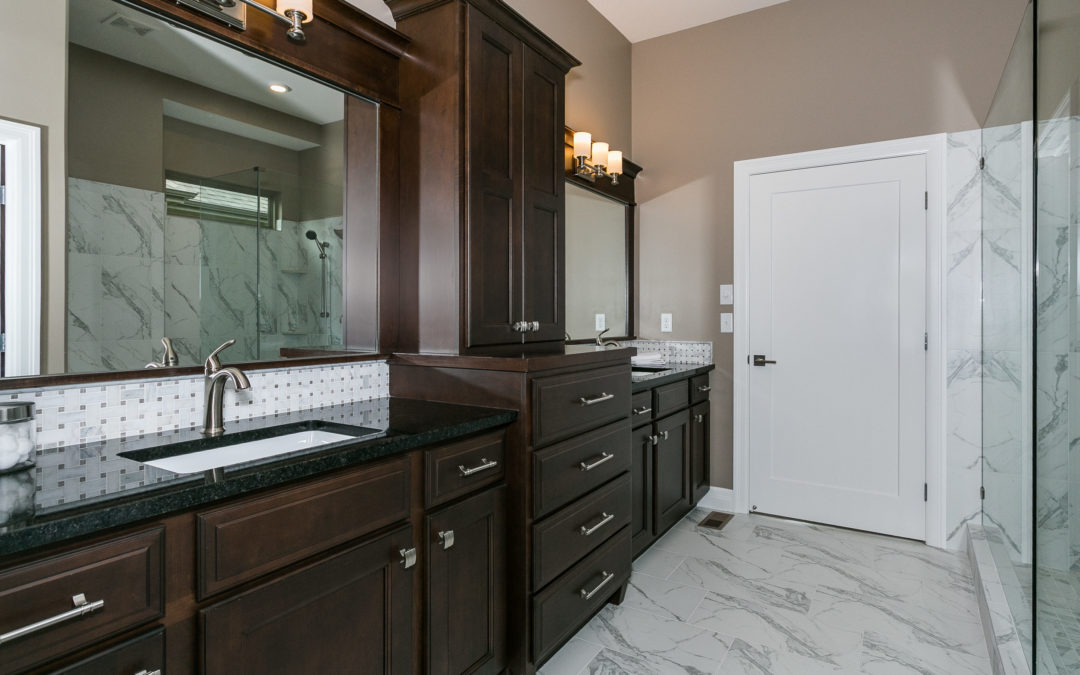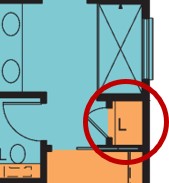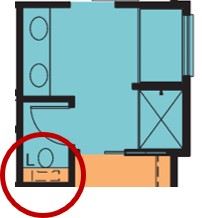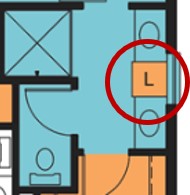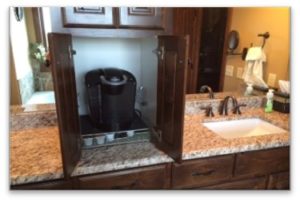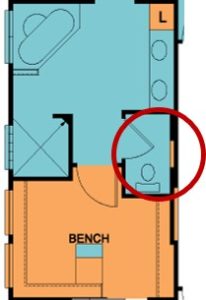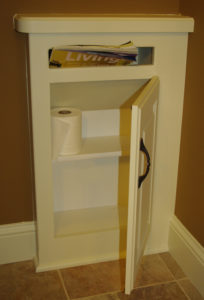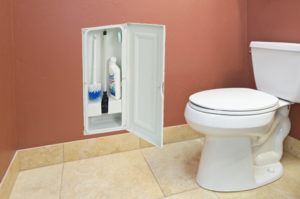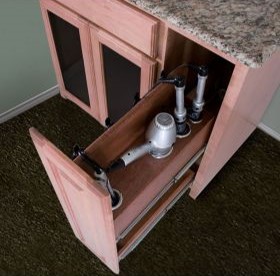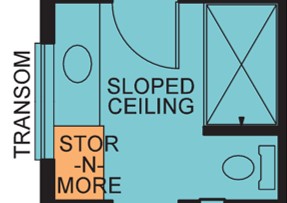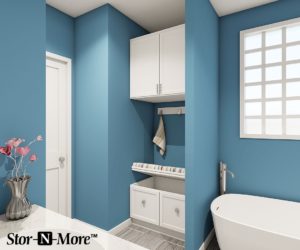
Flexible Living: You Have Options
“Have it your way,” wasn’t just an advertising slogan; it’s evident throughout our homes, showing up in our priorities. That’s why you sometimes see layout options highlighted alongside the original design’s presentation floor plan artwork. When the plan was being created, our designers recognized that suggesting a particular modification would appeal to a significant percentage of new home buyers and therefore included that option on the construction drawings.
Bedrooms
The Teglia Place (plan #42481) provides a good example. As originally designed, the split three-bedroom plan offers a powder bath, highly prized by people who love to entertain, adjoining the staircase. However, some home buyers would be willing to forego the powder bath in favor of spacious walk-in closets for both secondary bedrooms. As both configurations are shown on the construction drawings, the option is also illustrated with the presentation artwork.
Teglia Place – #42481
Optional Bedroom Layout
Bathrooms
As originally designed, the second floor of the Dillon Park (plan #42477) shows a two-story high front entry and owner’s suite with dual-sink vanity, linen cabinet, toilet area that provides privacy without the claustrophobia of having a door, and 6’-4”’ x 7’-8”’ walk-in closet.
Some homeowners prize “me” space around the sink they use in their bathroom. In the “Alternate Owner’s Bath” rather than one vanity with two sinks, two separate vanities provide counter space for items each person uses. (This also helps when one wants to keep the vanity area clean, but that’s not important to the other.) And to avoid the door into your bathroom swinging against the vanity, a pocket door is suggested instead. A bonus is being able to peer into the mirror and see how you look from behind, as reflected in the other vanity’s mirror.
Dillon Park – #42477
Alternate Bath Layout
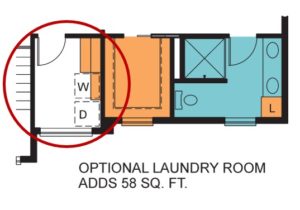 That two-story entryway is a “Wow!” feature many buyers like or even expect; however, other buyers look at that space and wonder how much it costs to heat, considering it “wasted space.” For these buyers, instead of the two-story entry, they could opt to add the 6’-4” x 8’-8” “open to below” space to the walk-in closet, plus have a convenient seat for dressing (natural light is great for discerning colors in your wardrobe!).
That two-story entryway is a “Wow!” feature many buyers like or even expect; however, other buyers look at that space and wonder how much it costs to heat, considering it “wasted space.” For these buyers, instead of the two-story entry, they could opt to add the 6’-4” x 8’-8” “open to below” space to the walk-in closet, plus have a convenient seat for dressing (natural light is great for discerning colors in your wardrobe!).
Still another option in lieu of the two-story high entry is adding an upstairs laundry room. This home plan also has a first-floor owner’s suite and was designed with the laundry room on the main floor. Note: two-story high space is counted only one time when calculating a home’s square footage. Finishing off that space upstairs adds 58 square feet to the home.
Home Offices
People who work from home, whether that’s a full-time home-based business, telecommuting two days a week, or just finishing up a project at home, typically need dedicated space for where they’ll do their work. The Slater (plan #29333) suggests a couple options, starting with the traditional home office at the front. This location is popular for its convenience to the front door when clients and/or colleagues arrive, for its relative privacy, and proximity to a bathroom. Also, a private entrance into the office could be added from the front porch. Depending on your household size and preferences, we’ve also seen Bedroom 2 converted into a second home office or even a conference room.
Notice also there’s a Pocket Office off the owner’s suite. Most people have strong opinions against working from their owner’s bedroom, feeling that area must be set apart, a respite from work life; therefore, the pocket door is essential, closing off this ideal space with its sizable work surface, storage, and natural light.
Just under half of the homes built in America are built on basement foundations. So, the presence (or absence) of stairs going down to a basement can make a significant difference in a home plan. For the one-story Pelham Gables (plan #42446), no basement stairs can mean a much larger office space.
Pelham Gables – #42446
Optional No Stairs
Kitchen Pantries
Even two-story homes are affected when eliminating basement stairs. In the Bassett Terrace (plan #42241), deleting the staircase going down off the kitchen means you can double the size of the kitchen pantry!
Bassett Terrace – #42241
In Lieu of Stairs
Garage Spaces
It’s even possible to turn garage space into living space. The Windsor Cottage (plan #42226) includes the option of a first-floor bedroom suite rather than the original design’s tandem third-car garage space.
Windsor Cottage – #42226
Optional Bedroom 4
Pre-configured floor plan options, included on the construction drawings and shown accompanying the standard presentation artwork, help you envision some of the popular ways plans can be tailored to your preferences. Please know that Design Basics also offers individualized Plan Customization, providing you the opportunity to have our design team modify the plan you choose so that it lives exactly how you want!
Join us next time for Changing Households and Lifestages.
Livability at a Glance™ is our proprietary color-coded floor plan system that highlights four different lenses especially important to women: Entertaining, De-stressing, Storing, and Flexible Living. Discover your Lifestyle Profile by taking our Livability at a Glance Quiz.
For more resources on thoughtful design and products:
- Visit our blog
- Browse our Her Home™ Magazine
- Thoughtful Design Concepts
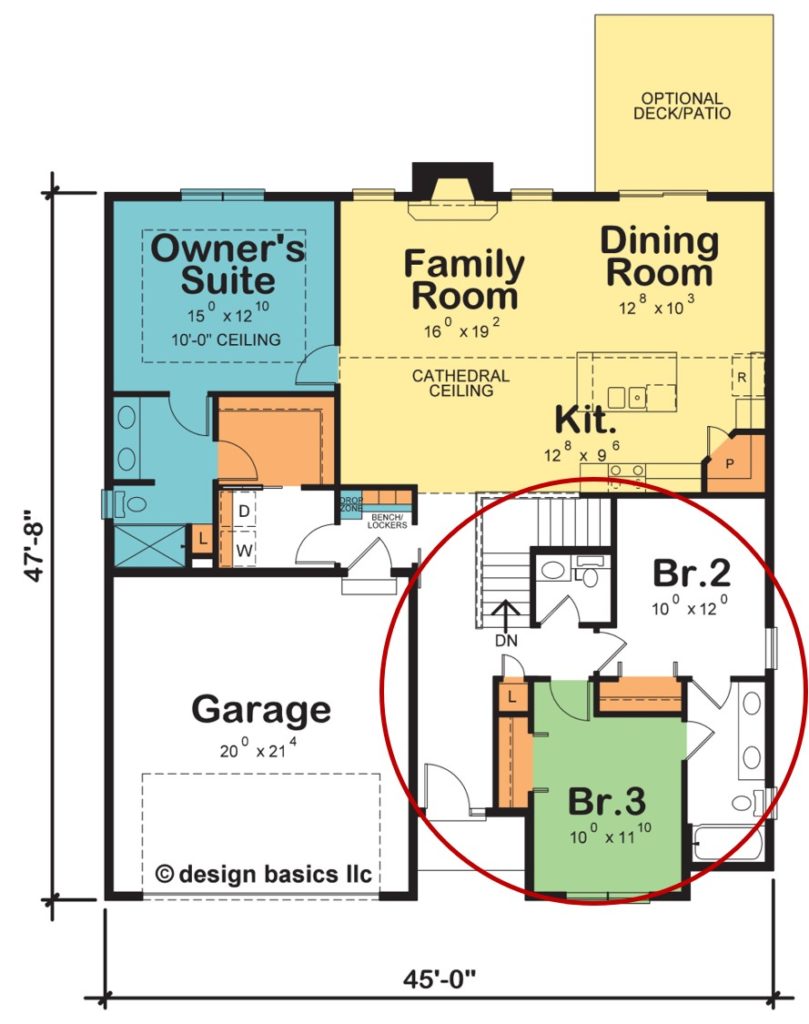
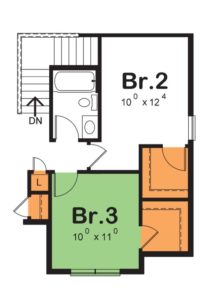
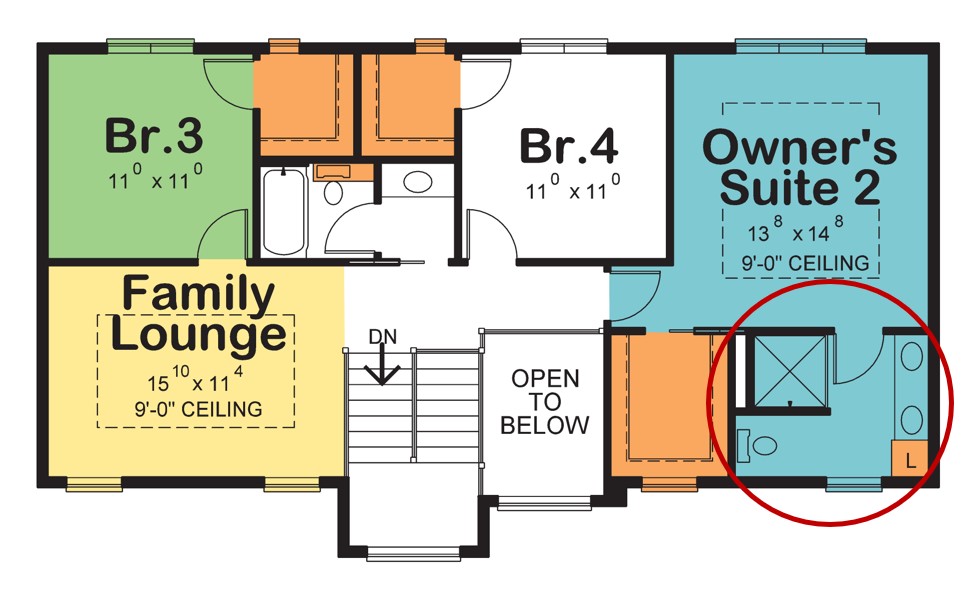
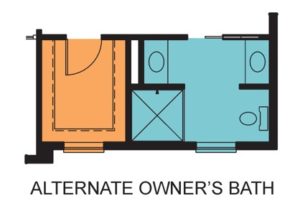
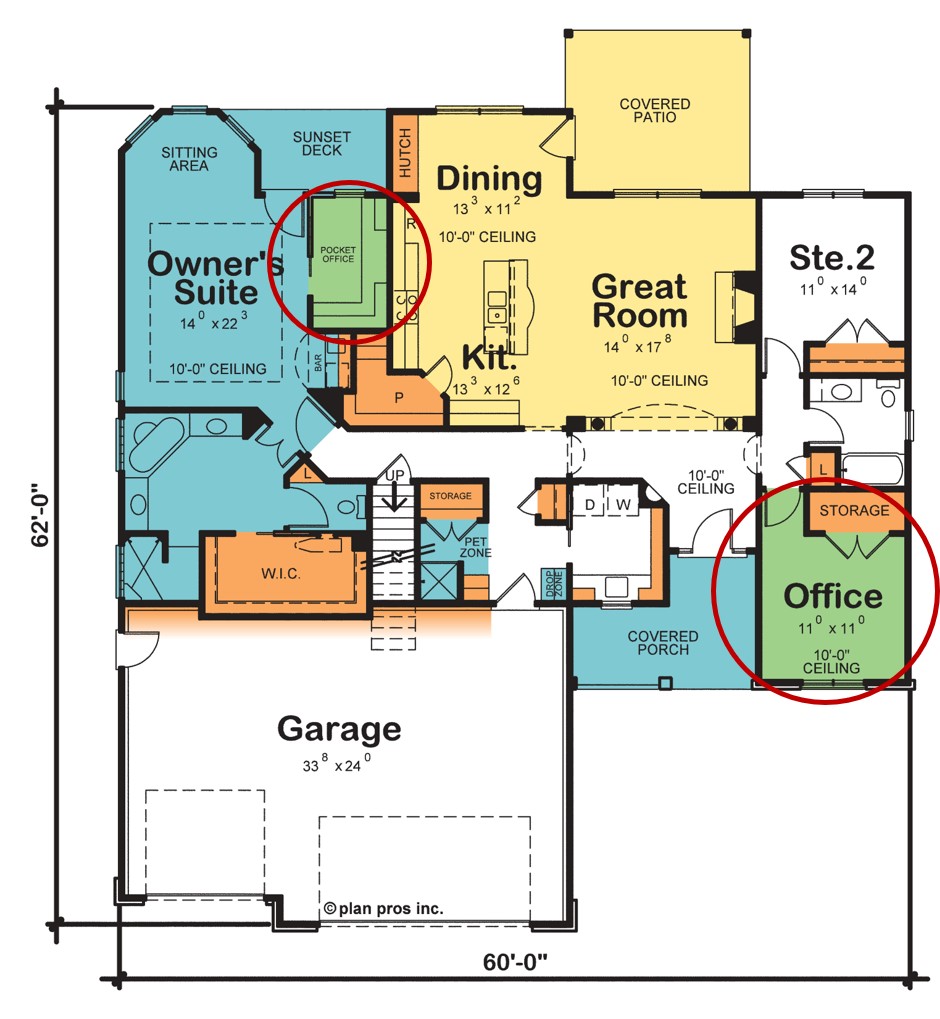
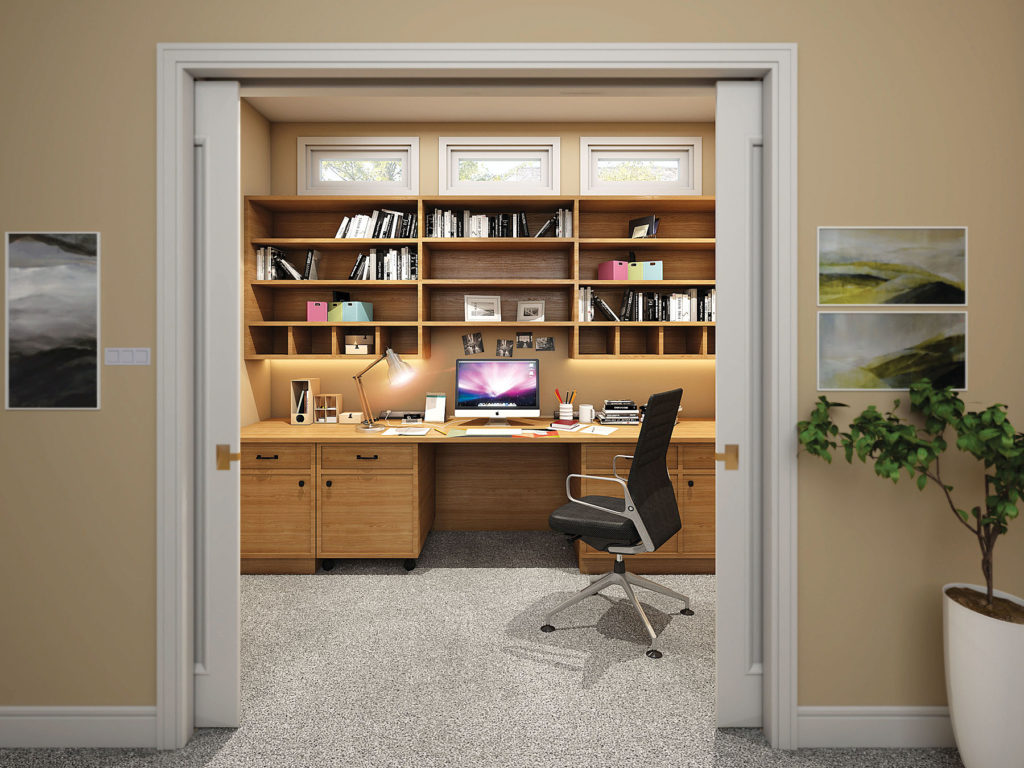

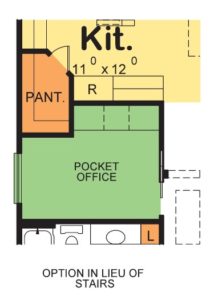
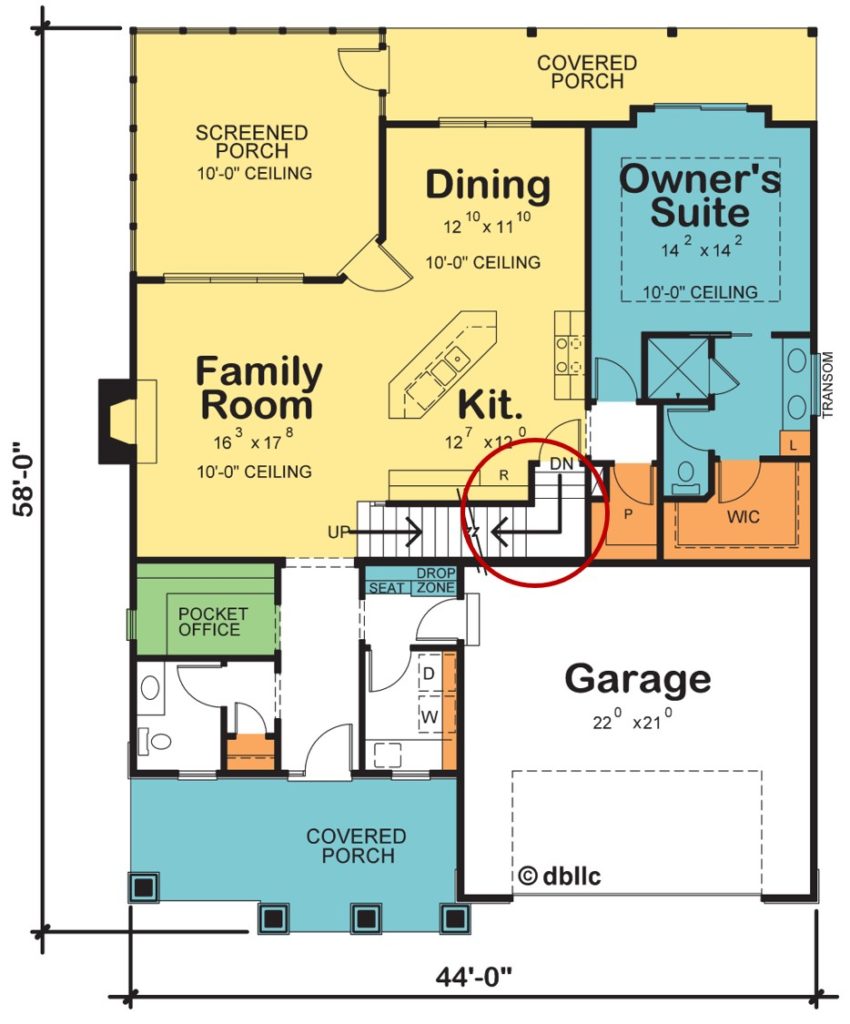
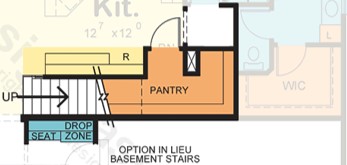
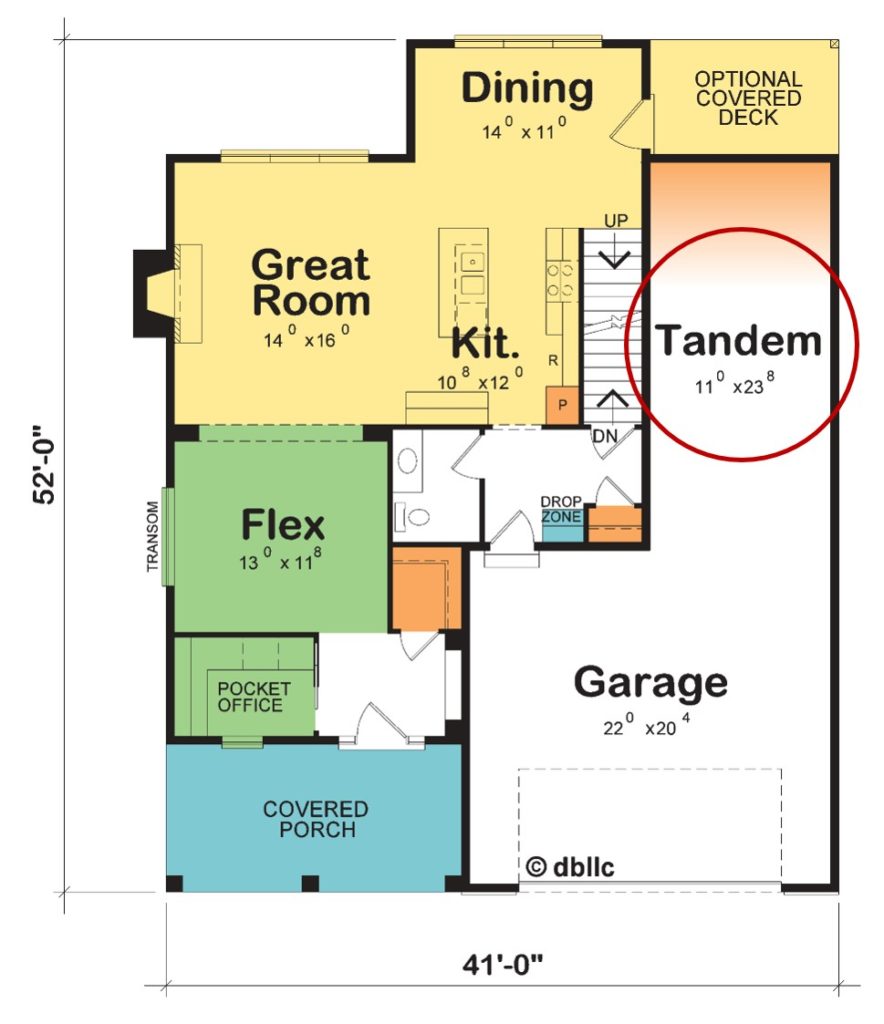
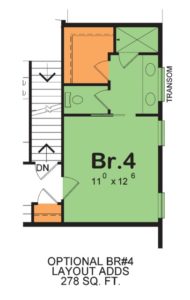
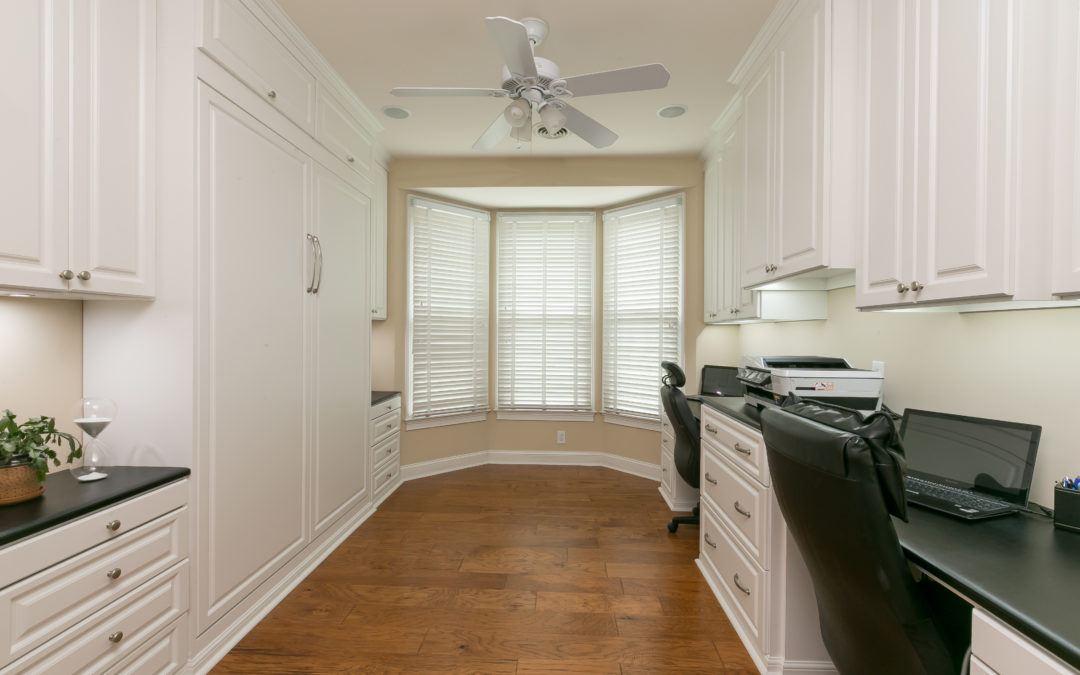
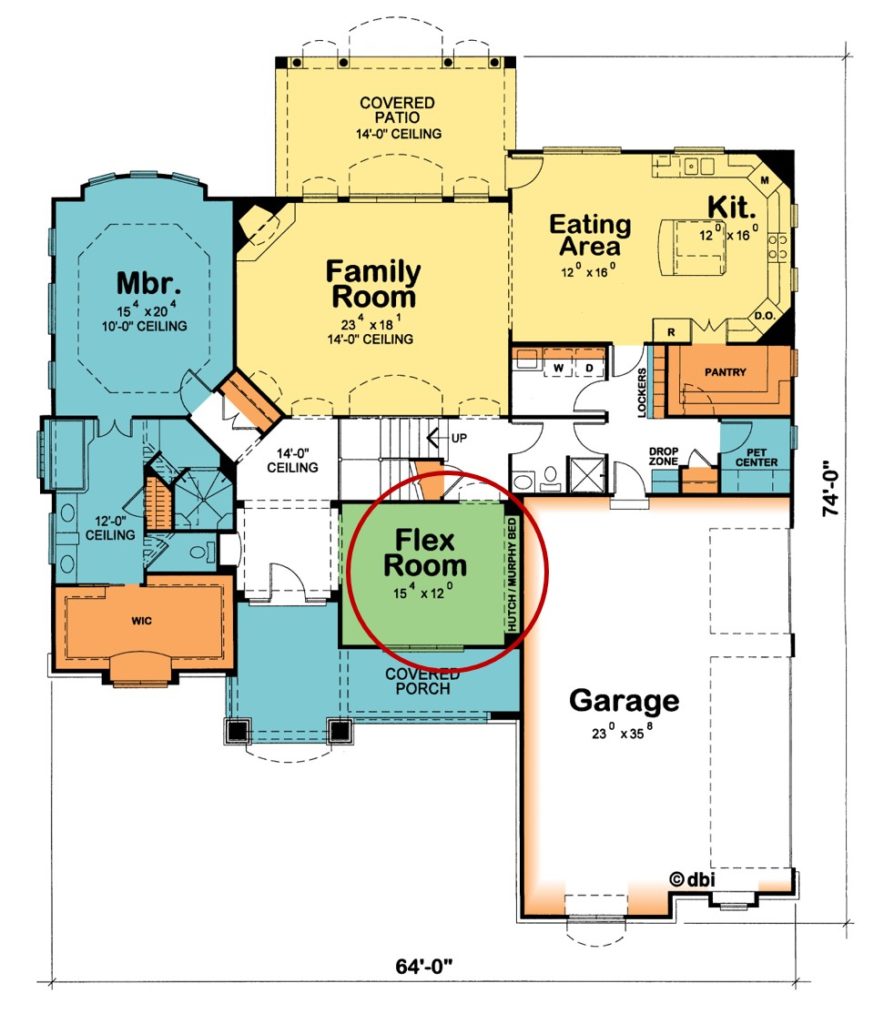
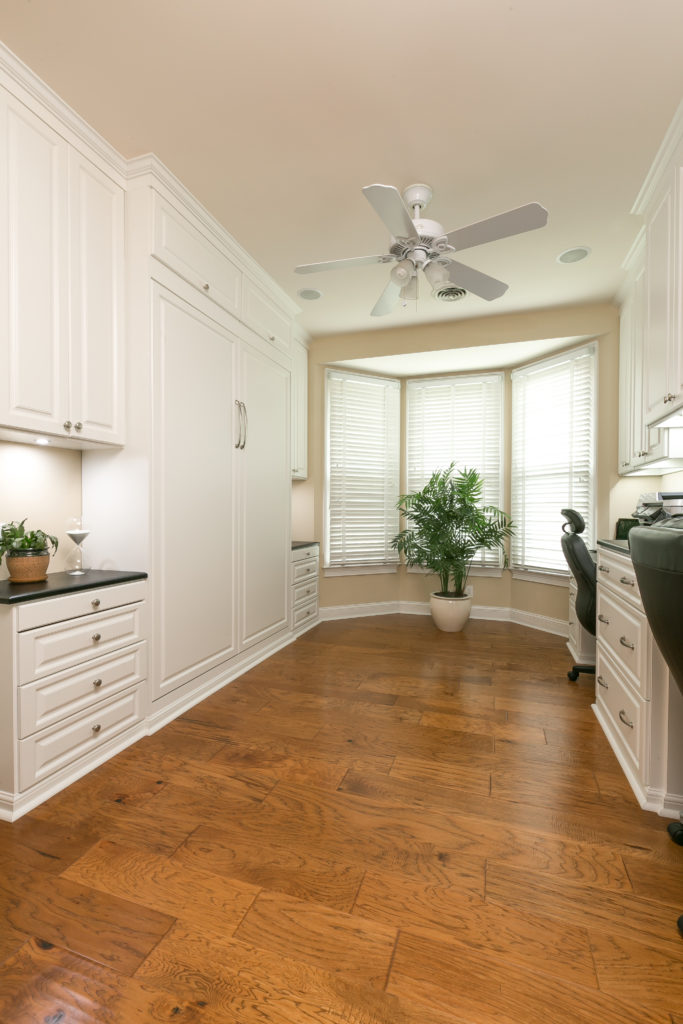
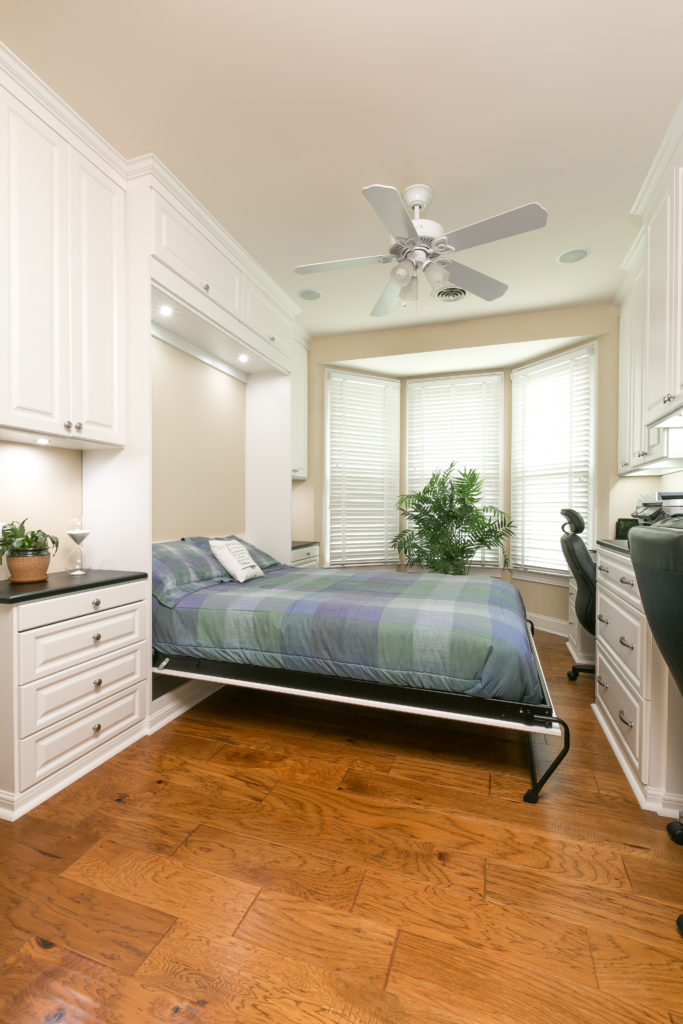
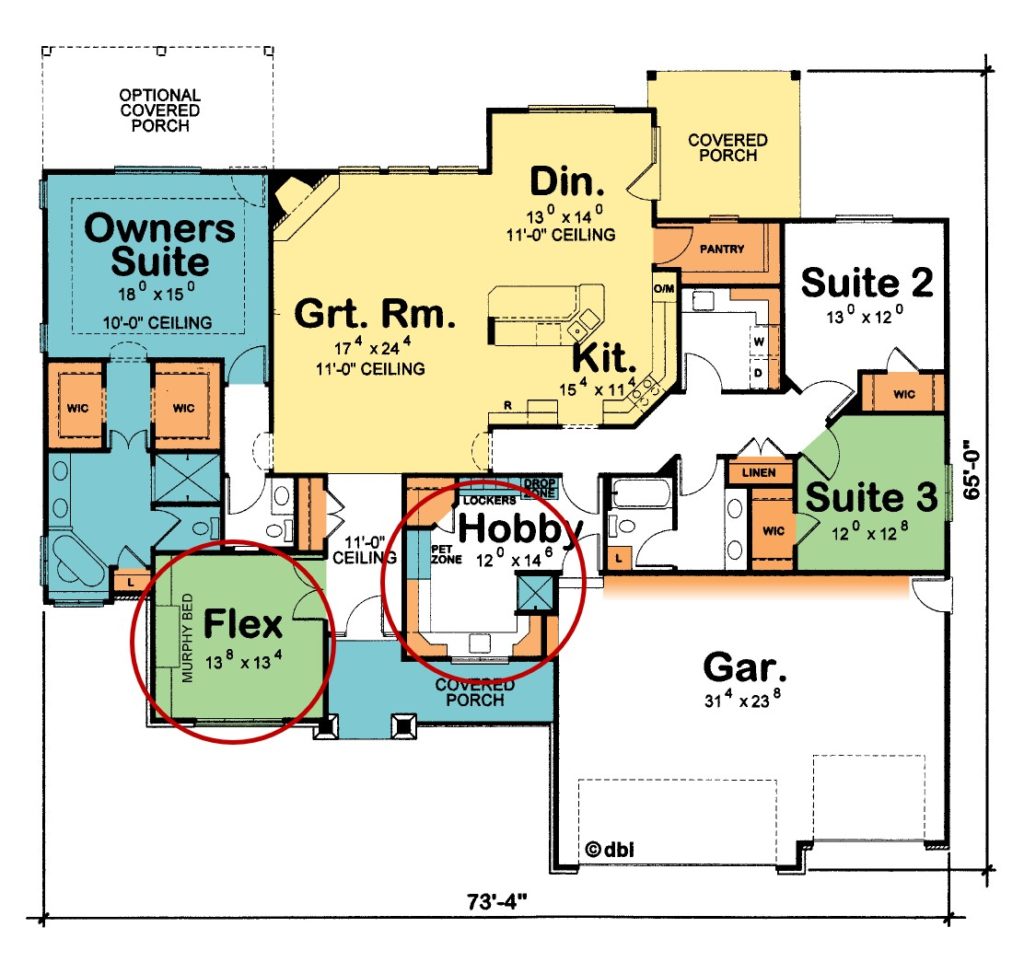
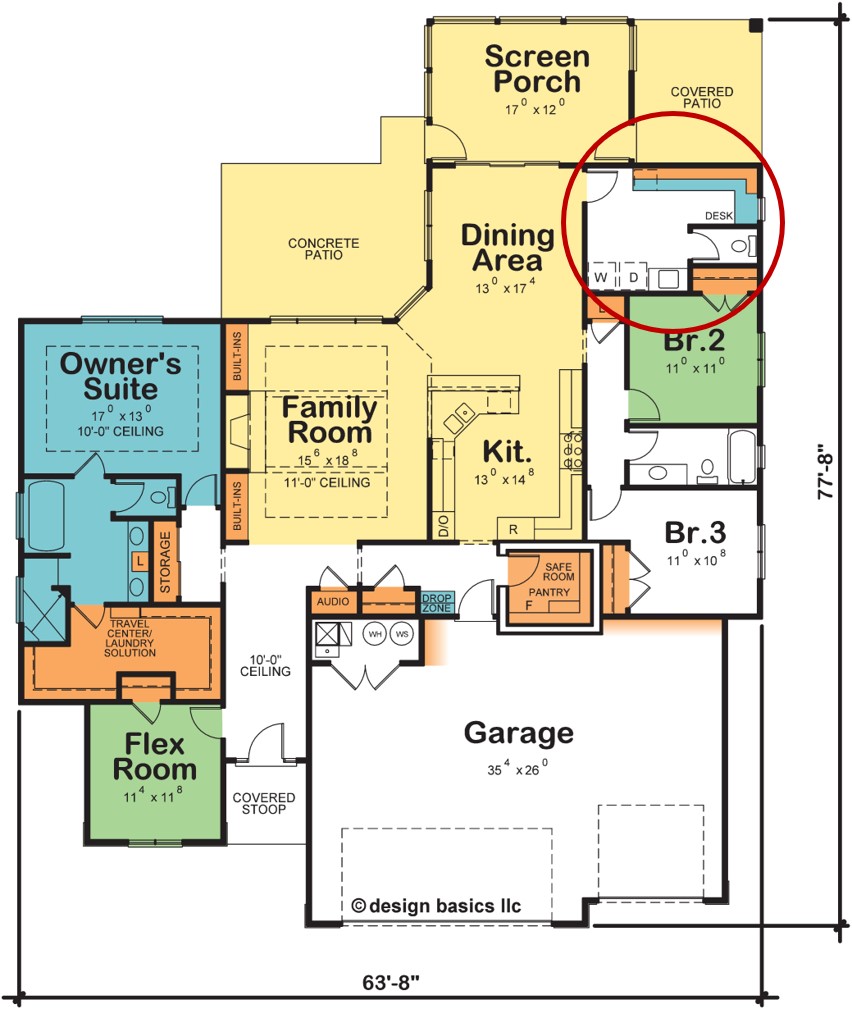
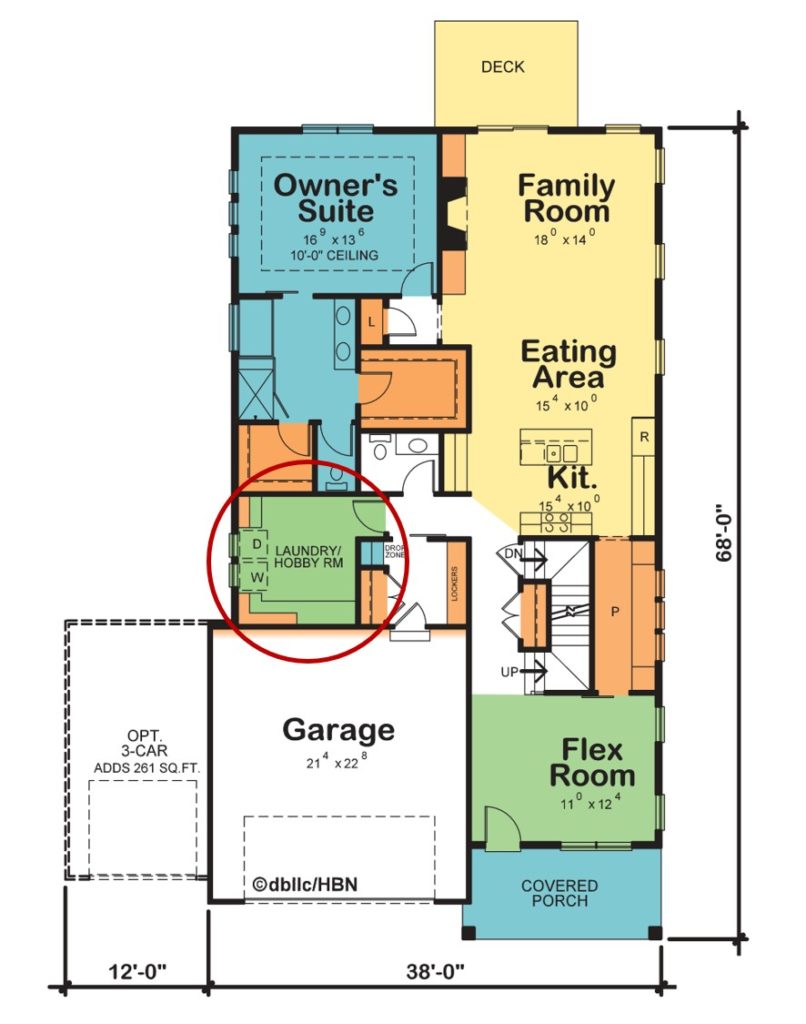
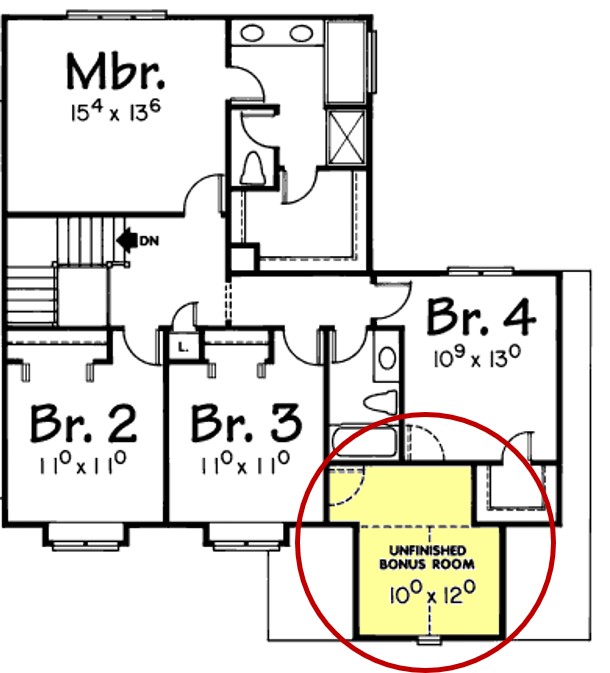
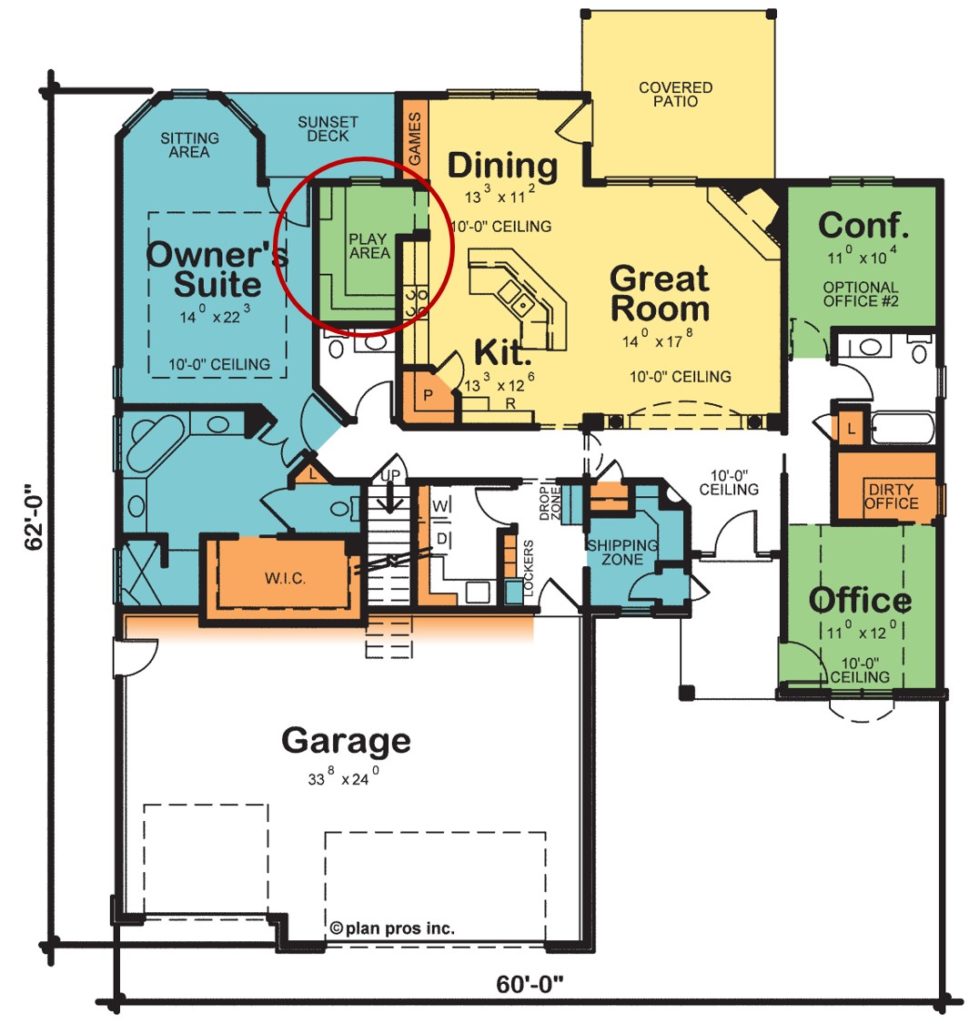

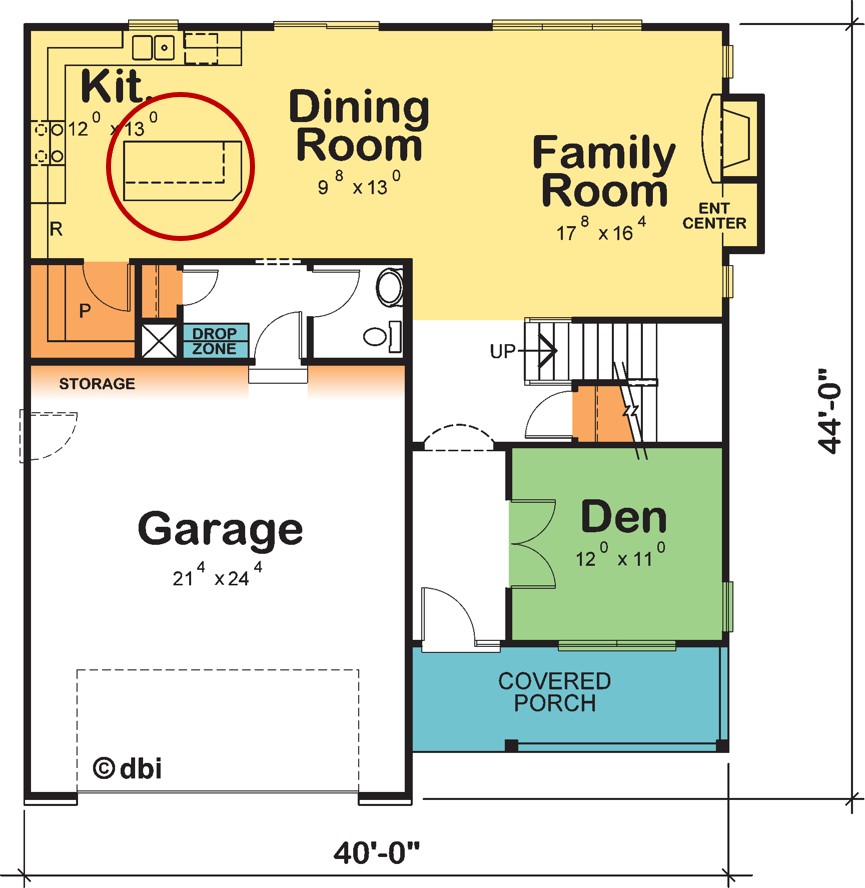
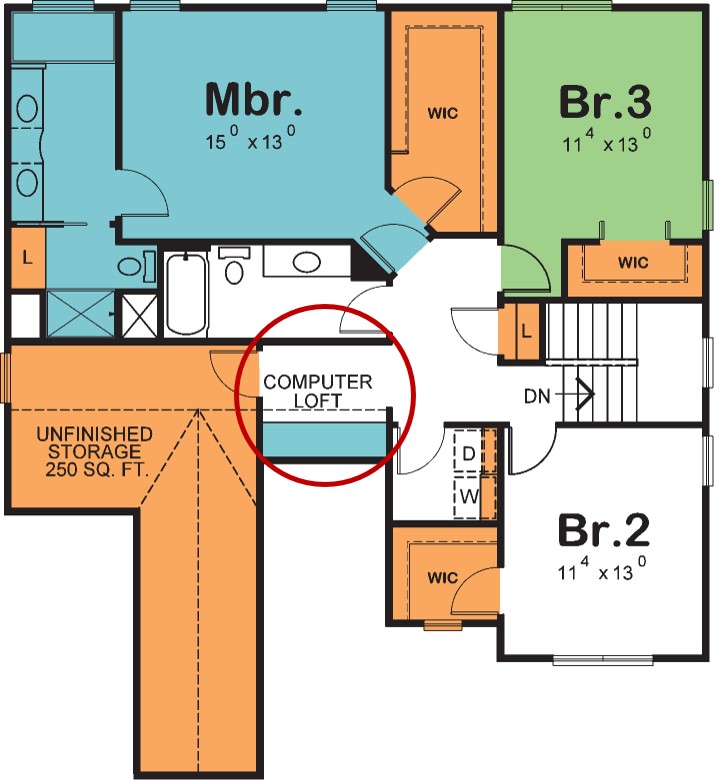
 Rocket men! Our tech-savvy kids of all ages began to experience the joys of new, offline activities. But whether it was jigsaw puzzles or model glue and paint drying, or even some board games, where could such indoor undertakings be left, undisturbed, to complete later? The multi-purpose laundry/activity center in the Aden (
Rocket men! Our tech-savvy kids of all ages began to experience the joys of new, offline activities. But whether it was jigsaw puzzles or model glue and paint drying, or even some board games, where could such indoor undertakings be left, undisturbed, to complete later? The multi-purpose laundry/activity center in the Aden (